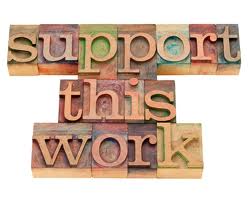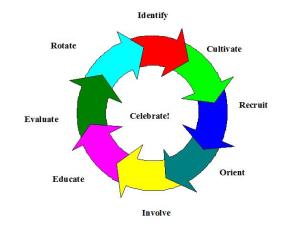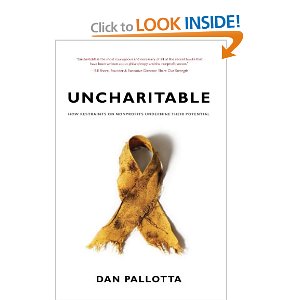 Hmmm? I must be on a Jeff Brooks kick because this is the second or third time I referenced his blog — Future Fundraising Now — in the last few weeks. LOL Did you read his blog post titled “Pixar’s 22 rules of fundraising” from a guest blogger named Andrew Rogers? If not, then you have to find a few minutes to do so. Those 22 rules are awesome and should be part of every fundraising professional’s toolbox. Today, I’m focusing on “Rule 16: What are the stakes? Give us reason to root for the character. What happens if they don’t succeed? Stack the odds against.”
Hmmm? I must be on a Jeff Brooks kick because this is the second or third time I referenced his blog — Future Fundraising Now — in the last few weeks. LOL Did you read his blog post titled “Pixar’s 22 rules of fundraising” from a guest blogger named Andrew Rogers? If not, then you have to find a few minutes to do so. Those 22 rules are awesome and should be part of every fundraising professional’s toolbox. Today, I’m focusing on “Rule 16: What are the stakes? Give us reason to root for the character. What happens if they don’t succeed? Stack the odds against.”
When applying this Pixar rule to fundraising, Andrew Rogers says:
“Rule for fundraisers: What happens if the need isn’t addressed? How are real people being affected? In our case, we should never “stack the odds” by exaggerating or otherwise being less than perfectly truthful. On the other hand, don’t tell less than the full truth either, and remember that the full truth often isn’t very pretty.”
I cannot tell you how many times I’ve seen a non-profit organization try to apply this rule by telling donors things like:
- We’ll close our doors unless we meet this fundraising goal.
- We’ll shut down a site if this campaign fails to hit goal.
- We’ll eliminate this program if we’re not successful.
To be clear, I don’t think Rule 16 is a license to practice extortion or heavy-handed fundraising tactics.
In instances where I’ve seen agencies use urgency messages laced with “We’re gonna close or we’re going to eliminate programming,” two interesting things seem to happen every time:
- They usually get an initial bump in money coming in (e.g. donors respond), and
- The next time donors get solicited, the response is down again.
I believe there is a simple explanation for this phenomenon . . . donors don’t like to throw good money after bad.
Before you decide to hit that big red panic button on your fundraising dashboard and tell the entire community that you’re in trouble, I advise that you think twice about doing it. All you’re doing is setting the bar very high down the road, and what happens if you cannot get over that bar?
 I suggest going back and doing exactly what Rule 16 tells you to do:
I suggest going back and doing exactly what Rule 16 tells you to do:
- Write a case statement that tells a story about one of your clients (or a composite client).
- Describe their needs. What is at stake if they don’t succeed?
- Describe how you help them with those needs. Help me root for them!
- Describe how a donor’s support will tip the scales in their favor of our main character.
- Don’t make this story so dramatic that donors conclude that nothing they do will make a difference.
- Be truthful and make it emotional. You are telling a story!
This case for support document is internal. Use this tool to:
- develop your agency’s marketing materials and fundraising brochures,
- write your direct mail and targeted mail letters,
- write your website and social media copy, and
- train your fundraising volunteers on how to turn it into a story that they share with donors during a cultivation, solicitation or stewardship visit with a donor.
Always remember . . . donors care about your mission, your clients, and the impact of their contribution. They don’t normally care about saving institutions and your sacred cows.
What does your case for support (e.g. case statement) look like? When was the last time your refreshed that document? How do you go about developing that document? Please share your thoughts in the comment box below.
Here’s to your health!
Erik Anderson
Founder & President, The Healthy Non-Profit LLC
www.thehealthynonprofit.com
erik@thehealthynonprofit.com
http://twitter.com/#!/eanderson847
http://www.facebook.com/eanderson847
http://www.linkedin.com/in/erikanderson847







 The single most important thing an organization can do to ensure its sustainability is develop its board. You may be thinking — “No Dani, it’s staff, leadership, programming, impact or fundraising” — and all of those things are important, but none of them can happen the way they should without a strong board. Everything flows from a strong board of directors.
The single most important thing an organization can do to ensure its sustainability is develop its board. You may be thinking — “No Dani, it’s staff, leadership, programming, impact or fundraising” — and all of those things are important, but none of them can happen the way they should without a strong board. Everything flows from a strong board of directors.



 Identifying blog topics can be hard. Sometimes you find a comfort zone and ideas flow freely. Other times, it is next to impossible and the writers block is crippling. So, I love it when readers sometimes email me on the side and suggest topics.
Identifying blog topics can be hard. Sometimes you find a comfort zone and ideas flow freely. Other times, it is next to impossible and the writers block is crippling. So, I love it when readers sometimes email me on the side and suggest topics.








